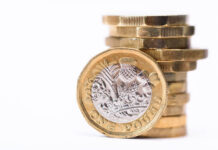AUD loses ground amid disappointing inflation data
The Australian dollar took a hit during the Asian session after the release of disappointing inflation data. AUD/USD slid to 0.7707, its lowest July since mid-July, as investors discount further a hawkish shift from the Reserve Bank of Australia. The Australian economy started the year positively suggesting that the country had successfully reduced its dependence to the mining sector, while on the inflation front, price pressure was finally picking up.
Nevertheless, over the last few month clouds started to gather at the horizon. Over the summer, the pace of retail sales growth slid into negative territory, while the minutes of the last RBA meeting came with a dovish done which suggest the central bank is in no hurry to lift interest rate before at least mid-2018.
Released this morning, the weak inflation data for the third quarter was the final nail in the coffin for a hawkish shift from the RBA as the institution has now a legitimate excuse to wait longer and can save its “Aussie strength” argument for later. The consumer price index growth fell to 1.8%y/y (versus 2.0% expected) compared to 1.9% in the second quarter. The trimmed mean measure held at 1.8%y/y, below expectation of 2.0%.
We maintain our bearish on the Aussie, especially against the greenback, as the political situation is moving in the direction for investors which should revive the reflation trade. In addition, the Fed has initiated the process to unload its balance and is expected to lift borrowing cost one more time before the end of the year. It definitely makes a good case for betting on the greenback.
Gold in the doldrums
The spot price of an ounce of Gold is edging lower over the uncertainties on the next Fed Chair. An ounce of Gold is now trading around $1273 down around 0.25% in the last 24 hours. Gold is definitely under pressure since Donald Trump issued a report stating that he would likely nominate John Taylor as the new head of the Federal Reserve. Indeed Taylor is strong partisan of increasing interest rates to 1.25%.
Gold price also continues to suffer as there is also the fact the North-Korean threat has not been taken seriously by markets and the move towards safe haven that we saw in the precious metal’s prices, going from $1200 to $1325 between July and September, did not continue.
On top of that, there are clear downside pressures despite recent soft data in the US economy. September Building permits slowed down to 1.22 million vs 1.25 estimates. Housing starts also missed the forecasts of 1.18 million with a release at 1.13 million. Nonetheless other data such as the Manufacturing PMI came in better than expectations. The October US Manufacturing PMI index climbed to 54.1 from 53.1 a month earlier. This will likely continue weighing on the gold price at least in the short-term.
As usual markets can turn very positive regarding the US economy and for any US related-news which drive the price of the precious metals lower. We are now entering again in a period of over-optimism. Reloading gold position below $1250 is definitely going to be a great bargain.












